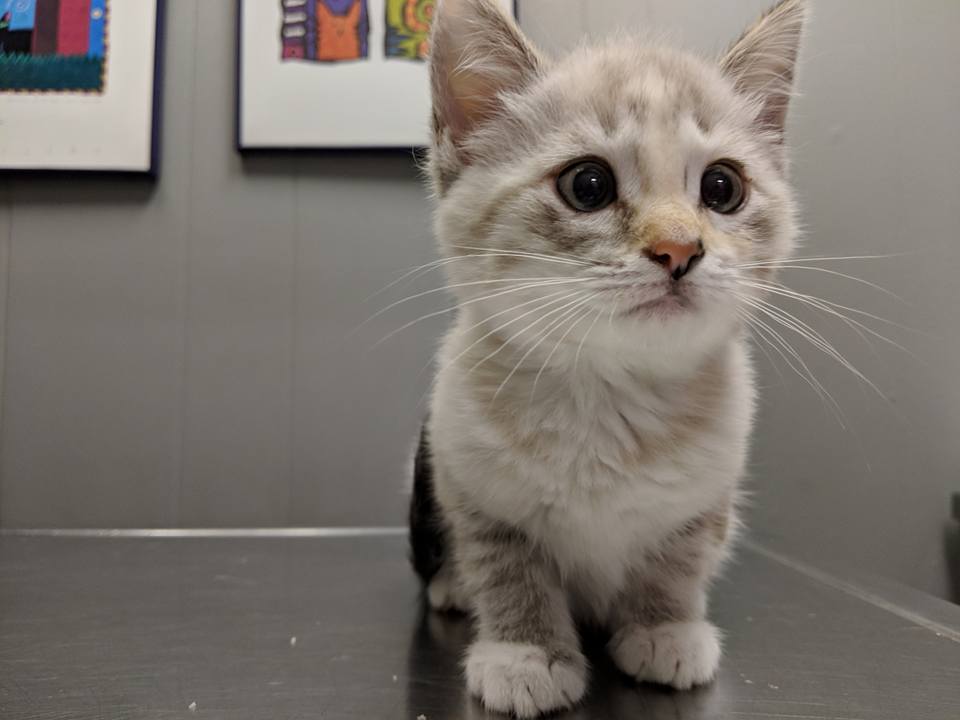Especially in a state like Minnesota, the ability to use a litter box is a major appeal of cat ownership. There are no outdoor potty breaks in the middle of a blizzard, you can leave for a weekend without needing a pet sitter, and you can head to happy hour after work without having to rush home to let anyone out! But when a cat’s litter box use wavers, it can quickly become frustrating, expensive, and may ultimately end in heartbreak. Litter box issues are one of the top reasons cats are surrendered to rescues and shelters, particularly for older cats. It can be hard to resolve these issues in a stressful shelter environment as well, making cats with litter box misuse some of the most at risk.
While it may take some time to find the right answer, there is often an easy fix to solving improper litter box usage: changing the type of litter or box, adding more boxes, adjusting box location, and cleaning more frequently can all do wonders for litter box use. While it may take some trial and error, finding the combination your cat prefers can often fix the problem. But sometimes, your cat may be trying to tell you something more serious. In some cases, improper litter box usage may be signs of an underlying medical cause. In addition to trying new litter box configurations, it’s important to contact your veterinarian to discuss potential health concerns that may lead to your cat’s improper elimination. While many of the medical culprits may sound scary, most can be treated relatively easily and can be very effective if started early.
Urinary Tract Infections
Urinary tract infections can cause painful and difficult urination. Your cat may feel the urge to urinate frequently but may produce very little urine. If a urinary tract infection is suspected, your veterinarian will perform a urine culture to determine if bacteria is present, and can prescribe an antibiotic to resolve the issue if needed.
Urinary Tract Obstructions
Urinary tract obstructions are most common in male cats, but can occur in anyone. They can be caused by inflammation, crystals, bladder/kidney stones, or debris from the bladder. Severe blockages can impede your cat’s ability to urinate and may cause painful urination with vocalization, frequent attempts to urinate, vomiting, and may make your cat lethargic. If a blockage is suspected, be sure to contact your veterinarian immediately, as urinary tract obstructions can be fatal within as little as 48 hours. Surgery may be needed to remove the blockage.
You may be able to prevent a urinary tract obstruction before it occurs by being proactive. If your cat is improperly urinating outside of their box, ask your veterinarian if a urinalysis is needed. Before they build up and become serious problems for your cat, crystals can be detected in the urine. Additionally, microscopic levels of blood may be indicative of a number of conditions, including stone development, crystals, inflammation, or infection. With early detection, these problems can be treated with diet changes and medication. Your veterinarian may recommend a prescription diet to help your cat’s urinary health before more serious problems occur, and can improve their wellbeing so that issues don’t persist.
Systemic Problems
Other health concerns not directly related to the urinary tract may increase your cat’s frequency of urination, and may make it difficult for your cat to use the litterbox every time. Kidney and liver diseases can cause waste to build up in your cat’s body which cannot be properly filtered. In an attempt to flush these toxins out, your cat may increase its water intake, leading to more frequent urination. Urinalysis in combination with bloodwork can inform you about your cat’s kidney and liver function, and will help your vet determine if medication or diet changes are needed. Likewise, diabetes can increase your cat’s thirst and frequency of urination. As pet obesity is on the rise, so is diabetes. While it is most common in overweight and obese cats, it can occur in cats of all ages and sizes, and bloodwork and urine tests should be completed if your cat’s water intake suddenly increases. Other diseases that cause changes in hormones, such as hyperthyroidism or (in more serious cases) some cancers, can also change the amount of water your cat drinks, and should be discussed with your veterinarian.
If your cat’s litter box habits change, it’s important to consult with your veterinarian early. While it may be an easy environmental fix, it could be indicative of more serious underlying concerns. By talking to your veterinarian right away, you can establish a treatment plan to resolve the problem, saving both you and your cat from extended frustration and distress.
